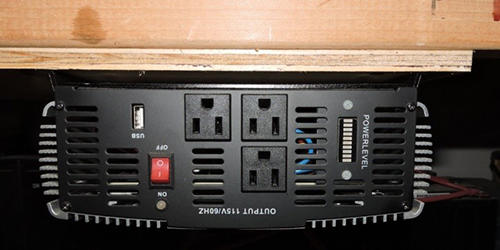Living without the luxury and convenience of modern technology is hard for some of us to imagine. Many electronic devices, such as refrigeration and medical devices, make life much more manageable daily. Air conditioning is pretty high on the list if you live in places like South Florida.
Our power grid is vulnerable and can be damaged by anything from high winds to much more severe events. Loss of power for a few hours due to a severe storm is tolerable; losing it for weeks, months, or even years would devastate everyone. Therefore, many doomsday preppers work on effective ways to live “off-grid.”
For the most part, all off-grid power banks are unreliable at best. That doesn’t mean they will not produce a bit of power daily, but how much they will be capable of will vary, and they won’t produce any electricity if the right conditions aren’t available.
Solar power alone is good but will only work during the daytime. But even then, rain and snow can seriously affect power production. Wind power only works when the wind blows at ten mph.
The solution? A reliable power bank to store your electrical power will allow you to use it when needed.
Car batteries can be used as the basis for building a battery bank. You can use any car batteries, which don’t have to be from a car. They can also be from a boat or motorcycle and used in conjunction with one another, as long as they are 12-volt.
All batteries are DC devices, meaning they have a positive and a negative connection. Electricity flows out from the battery at the negative pole and back into the battery at the positive pole. It is a pretty simple concept.
Connecting two batteries with the positive pole of one battery connected to the negative rod of the other allows the voltage of the batteries to be added. So two 12-volt car batteries connected in series will produce 24 volts. Connecting three will provide 36 volts, and each battery you add will add another 12 volts.

You can use whatever new or used car batteries you can find for a battery bank. You’ll want to make sure that the batteries are still good, as a bad battery can short out the system, causing wires to burn, and will be completely useless.
Deep cycle batteries, or marine/RV batteries, are suitable for these types of power systems. The reason is that they are not as easily damaged by what is known as “deep cycling,” which is when the battery is outputting more than 50%. Regular car batteries can also be used, but they don’t usually last as long, but they are the more money-saving way to go.
The output of your survival battery bank will be 12 volts DC. An automotive charger can be connected to this for charging small things like cell phones, but if you want to power home appliances, you will need to ramp it up to 120 volts by using a voltage converter.

This is not a solution to power your entire house but rather an emergency measure meant to aid you in the event of a power outage.
"*" indicates required fields
